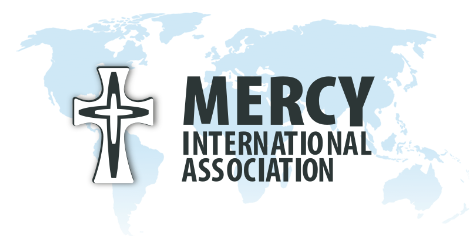- Mercy Foundresses
- Mary Ann Doyle (Anna Maria)
- Mother Joseph Mary Corcoran
- Mother M. Agnes Graham (Charlotte)
- Mother M. Agnes O'Connor (Mary)
- Mother M. Aloysius Scott (Elizabeth Scott)
- Mother M. Angela Dunne (Margaret)
- Mother M. Angela Gilsenan (Brigid)
- Mother M. Antonio Egan (Elizabeth)
- Mother M. Baptist Russell (Katherine)
- Mother M. Bernard Dickson (Julia)
- Mother M. Bernard Garden (Margaret)
- Mother M. Cecilia Maher (Ellen)
- Mother M. Cecilia Marmion
- Mother M. Clare (Moore (Georgiana)
- Mother M. Clare Dunphy (Catherine)
- Mother M. Clare Molony (Elizabeth)
- Mother M. Dolorosa Waldron (Anna Eliza, called Elsie)
- Mother M. Elizabeth Moore (Anne)
- Mother M. Evangelista Fitzpatrick
- Mother M. Frances Warde (Frances or Fanny)
- Mother M. Francis Creedon (Marianne)
- Mother M. Ignatius McQuoin (Elizabeth)
- Mother M. Ignatius Murphy (Frances Anne)
- Mother M. Juliana Hardman (Juliana)
- Mother M. Kostka Kirby (Kate)
- Mother M. Ligouri Gibson (Jane Frances, “Fanny” Gibson)
- Mother M. Paul Fielding (Eliza)
- Mother M. Philomene Maguire (Annie)
- Mother M. Regis Murray
- Mother M. Stanislaus O'Malley
- Mother M. Teresa Austin Carroll (Margaret Anne)
- Mother M. Teresa Cowley (Jane)
- Mother M. Teresa Farrell (Alicia)
- Mother M. Teresa White (Amelia)
- Mother M. Ursula Frayne (Clara Mary)
- Mother M. Vincent Whitty (Ellen)
Summary
Mother M. Bernard Dickson was the foundress of the Sisters of Mercy in Wellington, New Zealand. She was professed in 1850 after entering the Convent of Mercy in Bermondsey, London, in 1847.
Bernard was one of the founding six members who migrated from Carlow, Ireland to Auckland, New Zealand in 1850.
She volunteered for the Crimean War, and from 1854 to 1855, she worked as a nurse alongside Florence Nightingale. She returned to England after getting frostbite during the Crimean War.
In Wellington, a school for girls was struggling, and a plea for help reached the Sisters in Auckland. Bernard, with another sister and a postulant, arrived in Wellington from Auckland in 1861, and Bernard was appointed as Superior. By 1863, three sisters were accepted for Profession in Wellington, and the community became an independent foundation.
)
Early Life
Julia Dickson was born to Richard and Julia Dickson in Ipswich, Suffolk, England. She converted to Catholicism in Edinburgh in 1845, when she was 35 years old, and on May 1, 1847, she entered the Convent of Mercy in Bermondsey.
She obtained nursing experience at St. George's Hospital in London and applied her training to nurse soldiers at Scutari during the Crimean War.
Ministry in the Spirit of Catherine
Bernard was strongly attracted to the works of Mercy, as evidenced by her ability to adapt her skills to the needs at hand.
Although she mainly worked in the medical field before relocating to New Zealand, she was an adept administrator and later became a teacher in Auckland. In her fifties, she embarked on a mission to open a convent and manage a newly established school in Ahaura, a mining town in New Zealand. Unfortunately, this mission failed.
Bernard first returned to Bermondsey and then to Auckland, where she spent her life in the service of Mercy.
Challenges
It is difficult to imagine the numerous challenges Bernard and the other sisters from England and Ireland faced when they journeyed to Crimea to care for the sick and injured soldiers. Bernard suffered severe frostbite, which would leave her with scars for the remainder of her life.
Since she primarily worked with Maori people in New Zealand, she had to become familiar with and adapt to Maori culture.
Mercy Life Flowing from this (these) Foundations
The congregation established by Bernard in Wellington under challenging conditions flourished and undertook many of the charitable initiatives initiated by Catherine in Dublin.
The congregation would eventually become part of the Nga Whaea Atawhai o Aotearoa Sisters of Mercy New Zealand. In 2023, the New Zealand Sisters of Mercy launched Whānau Mercy Ministries, which is a “Ministerial Public Juridic Person (MPJP) of Pontifical Right” that will own and oversee incorporated ministries established by the Sisters in this country for over 150 years.
Relevant Biographical Resources
“Wellington 1861: Crimea’s Nurse to the Rescue”, Nga Whaea Atawhai o Aotearoa Sisters of Mercy New Zealand, June 9 2011 accessed 8 May 2024. https://www.sistersofmercy.org.nz/crimea-s-nurse-to-the-rescue/
Mary de Porres Flannigan, “Like A Mustard Seed. The History of the Sisters of Mercy Wellington.” Nga Whaea Atawhai o Aotearoa Sisters of Mercy New Zealand, 2009.
G. B. Abel. 'Dickson, Mary Bernard', Dictionary of New Zealand Biography, first published in 1990. Te Ara - the Encyclopedia of New Zealand, https://teara.govt.nz/en/biographies/1d12/dickson-mary-bernard (accessed 25 May 2024)


)
)
)